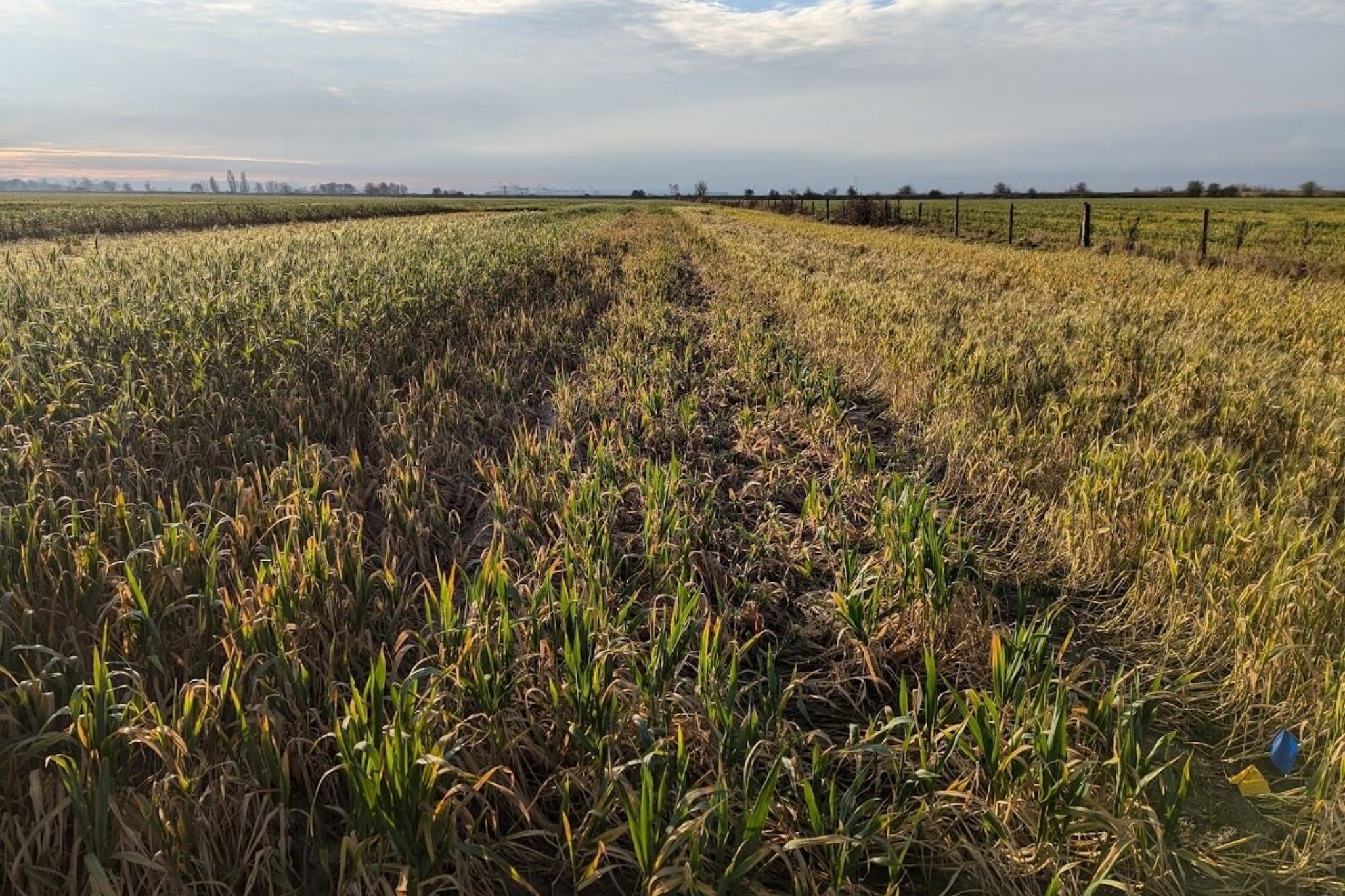Cover Crop Variety Trial

In fall 2024, Delta Farmland and Wildlife Trust led a cover crop demonstration trial on a vegetable farm on Westham Island, BC. The goal was to compare the performance of twenty different cover crop species and mixtures to identify which varieties grow quickly, suppress weeds, add diversity to crop rotations, and potentially withstand waterfowl grazing, important considerations for local vegetable producers.
The trial included a mix of cereals (like fall rye, winter wheat, and triticale), legumes (like fava beans and peas), brassicas, sunflowers, phacelia, and custom pollinator mixes. Plots were seeded in late August and early September, and monitored throughout the fall, winter, and early spring for percent ground cover, height, weed suppression, winter survival, and grazing pressure.
Key Findings
Some of the fastest-growing and most effective varieties for fall cover included the late and early pollinator mixes, fall rye, winter wheat, tillage radish, and spring triticale. These cover crops provided excellent early ground cover and competed well with weeds. In contrast, species like sunn hemp, forage sorghum, and buckwheat struggled, either due to poor germination or early die-off.
Overwintering success varied greatly. By March, only the winter cereals, winter wheat and fall rye, had survived the wet winter conditions, with winter wheat outperforming fall rye in terms of green coverage and resilience. Fava beans and phacelia showed good fall and early winter growth but did not survive into spring.
Waterfowl Grazing & Weed Suppression
Waterfowl grazing was concentrated on the brassica plots, particularly tillage radish, purple top turnip, and vivant hybrid turnip, which were heavily grazed by mid-January. Some of the cereal and clover mixes experienced partial grazing, while plots like fava beans and phacelia were largely left untouched.
Effective weed suppression was closely tied to crop performance. Well-established cereals and mixes successfully outcompeted weeds, while poorly performing plots, such as those with peas, buckwheat, and sunflowers, were quickly overtaken by species like Kentucky bluegrass.

October 25, 2024.
Oats centre (fallen over), barley to the right, triticale to the left.

January 13, 2025.
Oats centre (fallen over), barley to the right, triticale to the left.

March 13, 2025.
Barley right, oats centre left, and triticale to far left (taller).
For more details on cover crop varieties, seeding rates, methods, and performance, please read our full Cover Crop Variety Trial Report. The report includes results, photos, and practical insights from the 2024 variety trial.
In October 2024, we hosted a field day for local farmers to visit the cover crop plots, observe the early growth of each variety, and discuss results and practices with fellow growers and researchers. Building on the success of this year’s trial, we plan to continue the project in 2025–2026, expanding to include sites in both Delta and Abbotsford to compare performance across different soil and climate conditions.


Thanks to Zellweger Farms for hosting the trial and helping with seeding. Thanks to Cropthorne Farm for the use of the Jang Seeder and to Brent Harris for sharing seed for the pollinator mixes and all the seed sourced from Green Cover.
To learn more about the BC Living Lab, visit www.bclivinglab.ca. This project is funded, in part, by Agriculture and Agri-Food Canada through the Agricultural Climate Solution; delivered by the Investment Agriculture Foundation of BC.
How Can You Help?
Your donation will work towards conserving important farmland and wildlife resources contained in the Fraser River delta.
